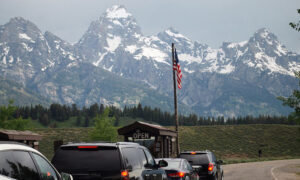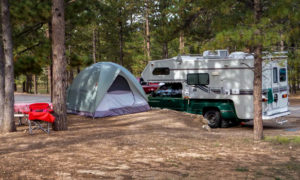

Hidden within the sagebrush covered hills and badlands of eastern Oregon is evidence of past worlds covered by ancient forests and inhabited by strange looking beasts.
Although paleontologists have been studying the area for nearly 150 years, the forces of erosion still uncover previously unknown plants and animals buried within the rocks. Many of the most dynamic finds from the John Day Fossil Beds are on display at the Thomas Condon Paleontology Center at the Sheep Rock Unit of the monument, where visitors can peer inside the fossil laboratory as paleontologists work on new finds.
John Day Fossil Beds National Monument preserves over 40 million years in a fossil record representing nearly two-thirds of the Cenezoic Era, the Age of Mammals. It is not just the breadth of time covered that makes this area unique, but also the ability to radiometrically date the rock layers, and thereby the fossils, with a high degree of accuracy.
While camping is not allowed in any of the units of the monument, there are many nearby campgrounds. Some have full service amenities, some are quiet and remote, some are in the forest, and some are right on the John Day river.
Click here for the newly developed handout (pdf) that shows the known campgrounds near the three units of the monument. Once the pdf downloads, scroll to the 2nd page of the file for detailed campground information and contacts for the commercial campgrounds.
Dispersed camping is allowed on Bureau of Land Management and Forest Service lands without a permit, but it is recommended that campers obtain a map that shows current property boundaries.
Read More about John Day Fossil Beds National Monument






